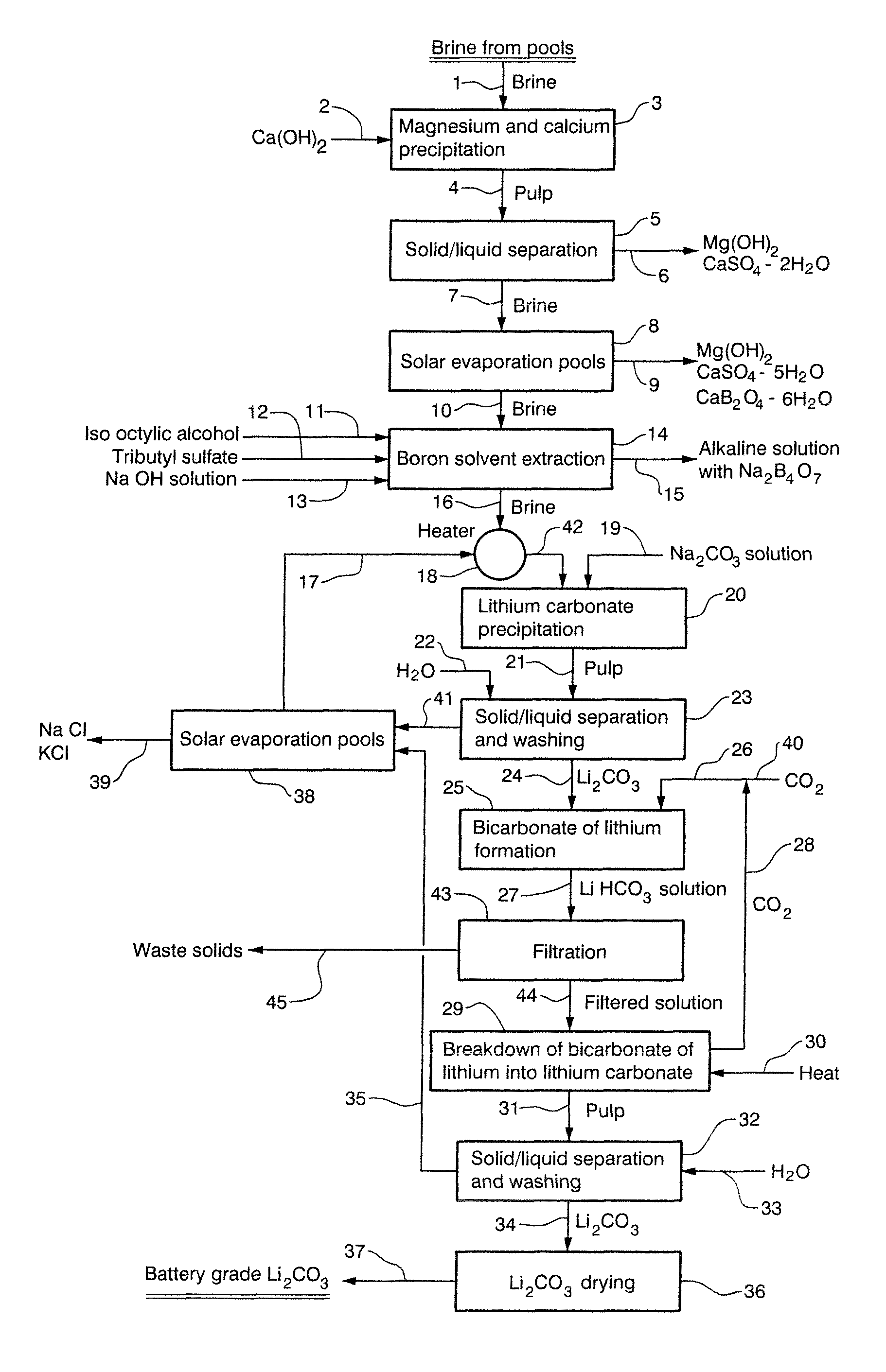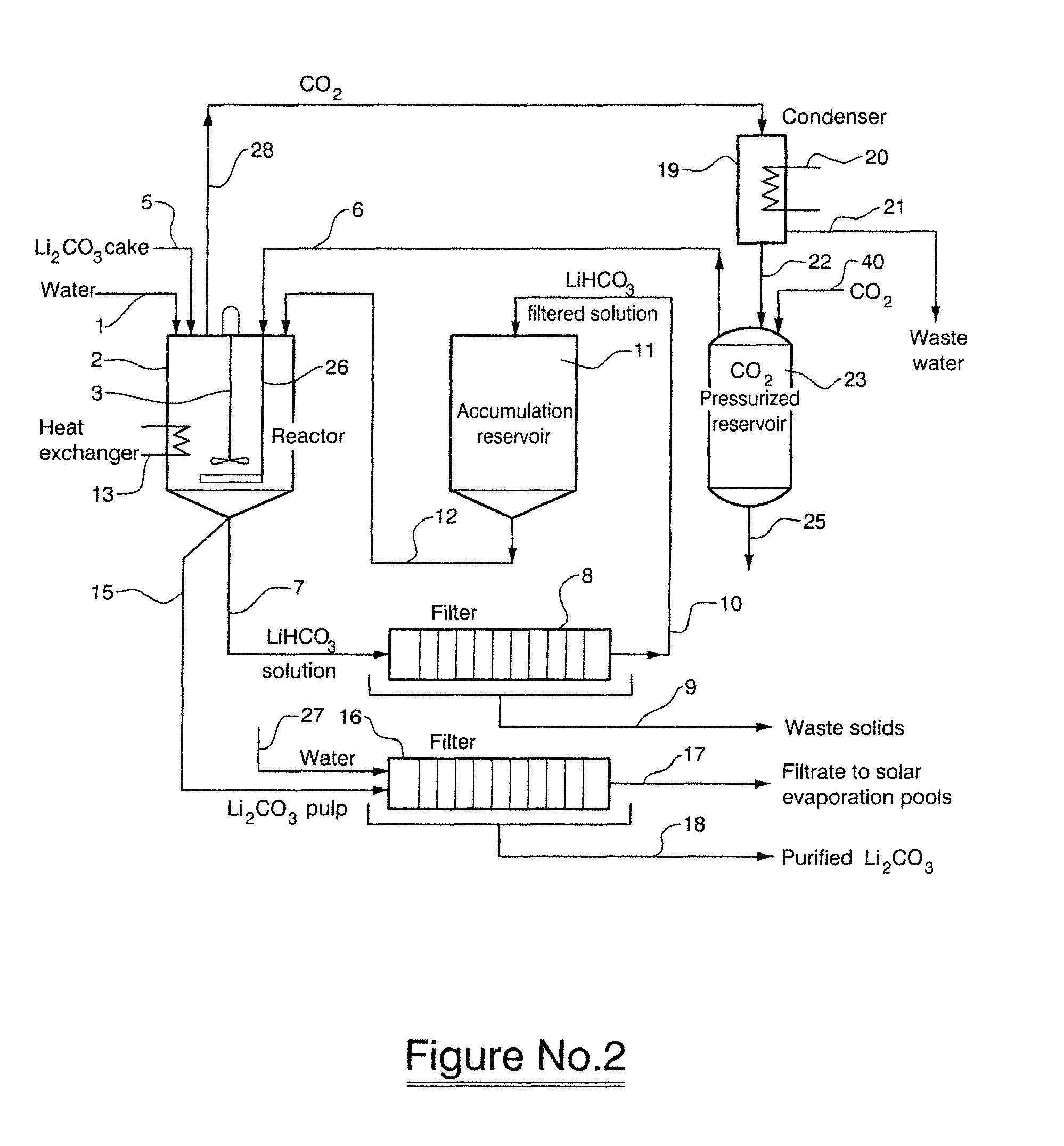Method for the production of battery grade lithium carbonate from natural and industrial brines
a technology of lithium carbonate and brine, which is applied in the direction of lithium compounds, boron-oxygen compounds, inorganic chemistry, etc., can solve the problems of high demand and risk of ignition
- Summary
- Abstract
- Description
- Claims
- Application Information
AI Technical Summary
Benefits of technology
Problems solved by technology
Method used
Image
Examples
example of an embodiment
OF THE INVENTION
[0045]A concentrated brine obtained from the Salar de Cauchari, Argentina, having a chemical composition as described in Table 5 was treated with saturated lime (Ca(OH)2) while maintaining the pH at 11 and at a temperature of 10° C. for 30 minutes.
[0046]
TABLE 5Chemical composition of concentrated brine obtained from the Salar deCauchariElementLiClNaKCaMgSO4=BH2O%0.41012.8105.4232.7212.4829.9315.9360.44555.423
[0047]The lime treated brine was subsequently concentrated in solar evaporation pools whereupon Mg(OH)2, CaSO4.5H2O and CaB2O4.6H2O were crystallized. The chemical composition of the resultant brine in presented in Table 6.
[0048]
TABLE 6Chemical composition of concentrated lime treated brine from the Salarde CauchariElementLiClNaKCaMgSO4=BH2O%0.71914.2202.8564.1990.0160.0082.9670.69874.183
[0049]The brine described in Table 6, having a boron content of 0.698% by weight was treated with 25% by weight hydrochloric acid in order to maintain the pH of the brine at a va...
PUM
| Property | Measurement | Unit |
|---|---|---|
| temperature | aaaaa | aaaaa |
| temperature | aaaaa | aaaaa |
| temperature | aaaaa | aaaaa |
Abstract
Description
Claims
Application Information
 Login to View More
Login to View More - R&D
- Intellectual Property
- Life Sciences
- Materials
- Tech Scout
- Unparalleled Data Quality
- Higher Quality Content
- 60% Fewer Hallucinations
Browse by: Latest US Patents, China's latest patents, Technical Efficacy Thesaurus, Application Domain, Technology Topic, Popular Technical Reports.
© 2025 PatSnap. All rights reserved.Legal|Privacy policy|Modern Slavery Act Transparency Statement|Sitemap|About US| Contact US: help@patsnap.com



